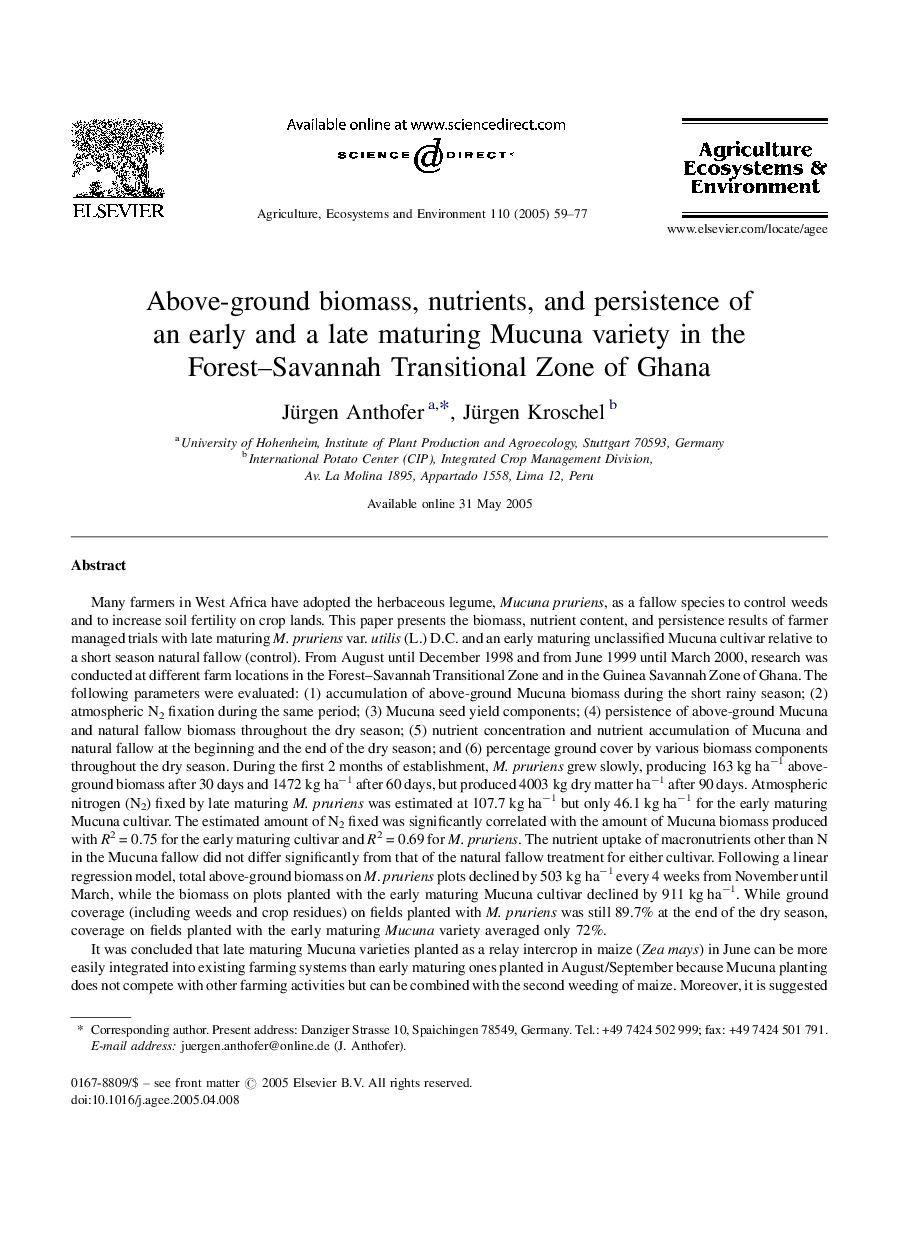| Article ID | Journal | Published Year | Pages | File Type |
|---|---|---|---|---|
| 8970771 | Agriculture, Ecosystems & Environment | 2005 | 19 Pages |
Abstract
It was concluded that late maturing Mucuna varieties planted as a relay intercrop in maize (Zea mays) in June can be more easily integrated into existing farming systems than early maturing ones planted in August/September because Mucuna planting does not compete with other farming activities but can be combined with the second weeding of maize. Moreover, it is suggested that the major advantage of a Mucuna fallow is based on the option of not having to burn vegetation in preparation for the next cropping season. The few emerging weeds can be easily slashed as compared to a natural fallow which produces large amounts of lignified plant material. Therefore, this slash-and-mulch technology leads to reduced nutrient losses.
Related Topics
Life Sciences
Agricultural and Biological Sciences
Agronomy and Crop Science
Authors
Jürgen Anthofer, Jürgen Kroschel,
